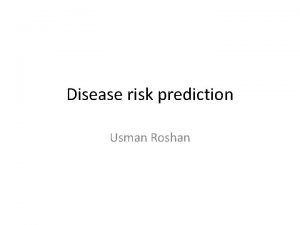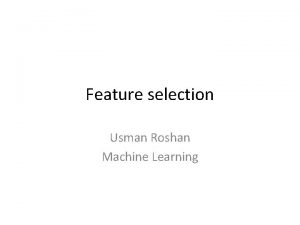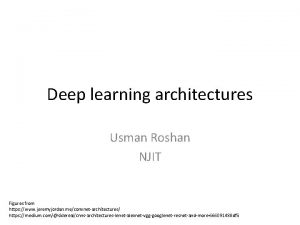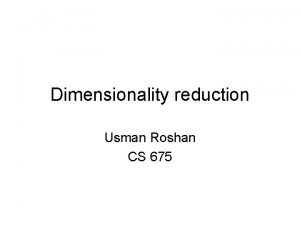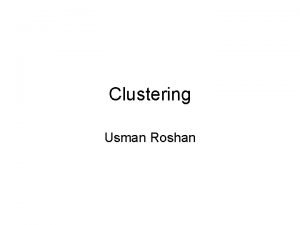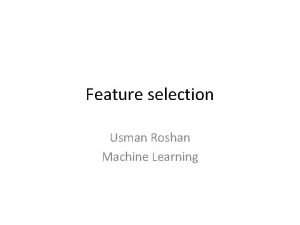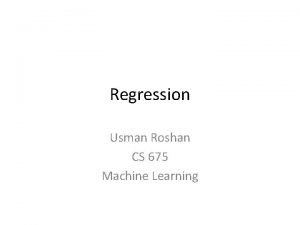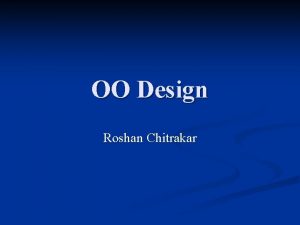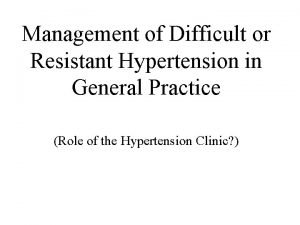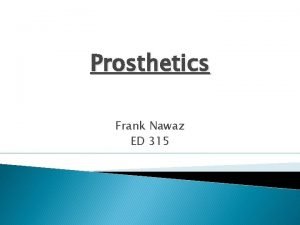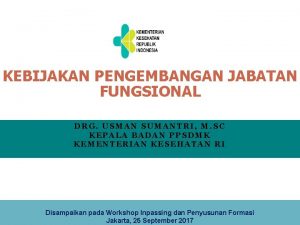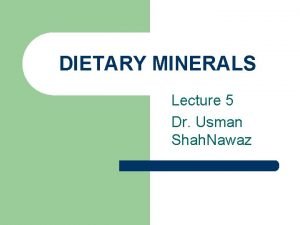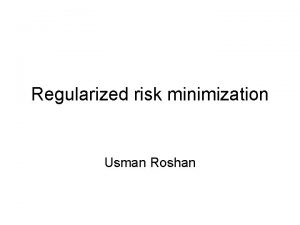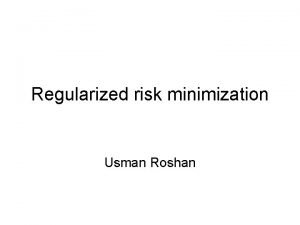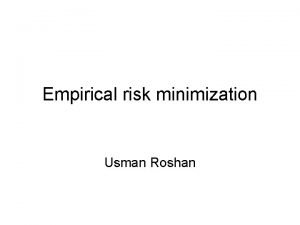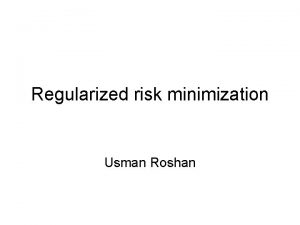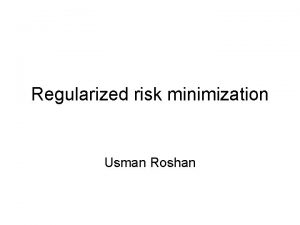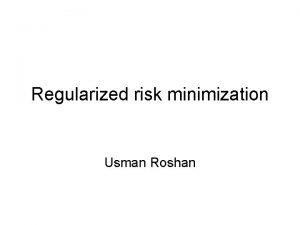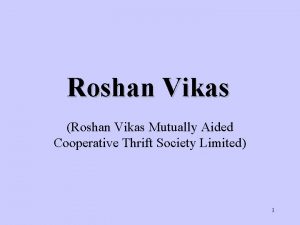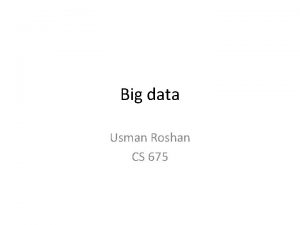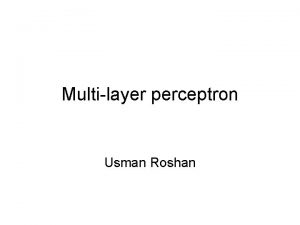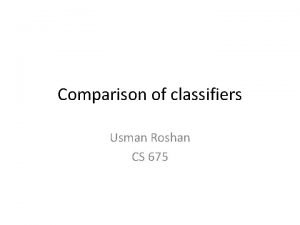Disease risk prediction Usman Roshan Disease risk prediction



















- Slides: 19

Disease risk prediction Usman Roshan

Disease risk prediction • Prediction of disease risk with genome wide association studies has yielded low accuracy for most diseases. • Family history competitive in most cases except for cancer (Do et. al. , PLo. S Genetics, 2012)

Disease risk prediction • Our own studies have shown limited accuracy with various machine learning methods – Univariate and multivariate feature selection – Multiple kernel learning • What accuracy can we achieve with machine learning methods applied to variants detected from whole exome data?

Chronic lymphocytic leukemia prediction with exome sequences and machine learning • We selected exome sequences of chronic lymphocytic leukemia from db. Ga. P. Largest at the time of download in August 2013. 186 cases and 169 controls • Case and control prediction accuracy with genetic variants unknown • Same dataset previously studied in Wang et. al. , NEJM, 2011 where new associated genes are reported but no risk prediction

What is whole exome data? Human genome sequence Introns Coding regions Exons Illumina 76 bp short reads (exome data). In practice flanking regions are also sequenced and so some intronic regions are included.

Obtain structural variants (1) Human genome reference sequence Short reads are aligned to human genome • Data of size 3. 2 Terrabytes and 140 X coverage • Mapped to human genome reference with BWA MEM (popular short read mapper)

Human genome reference Short reads from a single individual ATTAA ATTGA ATTGA Homozygous SNP encoded as 2 (0 if same as reference) ACCAG ACCCG ACCAG ATTGA ACCAG ATT--A ACCAG ATTGA Here no variant is Heterozygous reported but we detected Heterozygous indel SNP encoded it in a different individual. encoded as 1 Thus we assign it a value of 0 for this individual. Encoded into a feature vector of four dimensions (2, 1, 0, 1)

Obtain structural variants (2) Human genome reference ATTGA ATTGA Homozygous SNP encoded as 1 (0 if same as reference) ACCAG ACCCG Heterozygous SNP encoded as 1 Short reads from a single individual ATTGA ATT--A ATTGA Heterozygous indel encoded as 1 • Obtained SNPs and indels from the alignments for each individual

Obtain structural variants (3) A/C C 0 AA C 1 AC C 2 AA Co 1 AC Co 2 CC C/G CC CG GG CG CG Numerically encoded C 0 C 1 C 2 Co 1 Co 2 A/C 0 1 2 C/G 0 1 2 1 1 • Combine variants from different individuals to form a data matrix • Each row is a case or control and each column is a variant • 153 cases and 144 controls after excluding very large files and problematic datasets • 122392 SNPs and 2200 indels

Perform cross-validation study 00120. . . 02221. . . Training data Validation data Full dataset: each row is a case or control individual and each column is a variant (SNP or indel) 1. Split rows randomly into training validation sets (90: 10 ratio). 2. Rank all variants on training 3. Learn support vector machine classifer on training data with top k ranked variants 4. Predict case and control on validation data. 5. Compute error and repeat 100 times

Variant ranking F 0 C 0 1 C 1 1 C 2 1 Co 1 1 Co 2 2 F 1 2 2 2 0 0 F 2 0 1 2 1 0 Rank features C 0 C 1 C 2 Co 1 Co 2 F 1 2 2 2 0 0 F 2 0 1 2 1 0 F 0 1 1 2

Risk prediction with Pearson ranked SNPs

Prediction with GWAS

Cross-study validation

Prediction on external samples

Prediction on external samples

Pearson ranking of genes associated with CLL

Analysis of top ranked Pearson genes

Conclusion • Encouraging results with exome data • No known risk prediction study with exome data • Limitations: – Small sample size – Ancestry of some data unknown
